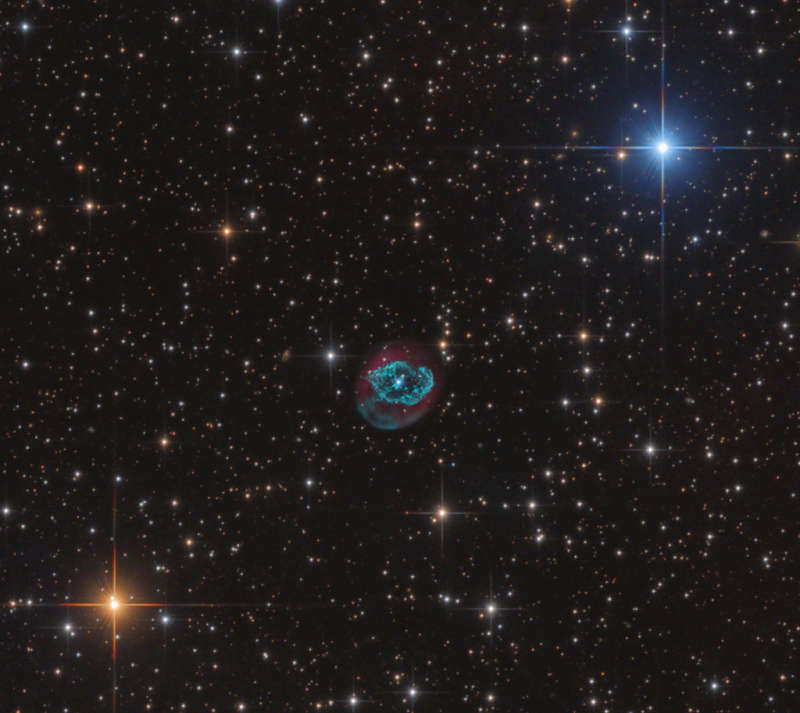Credit & Copyright: Bernhard Hubl
Explanation:
Planetary nebula Abell 78
stands out in this colorful telescopic skyscape.
In fact the colors of the spiky Milky Way stars depend on their
surface temperatures,
both cooler (yellowish) and hotter (bluish) than the Sun.
But Abell 78 shines by the characteristic emission of
ionized atoms in the tenuous shroud
of material shrugged off from an intensely hot central star.
The atoms are ionized, their electrons stripped away,
by the central star's energetic but otherwise invisible ultraviolet
light.
The visible blue-green glow of loops and filaments in the
nebula's central region corresponds to
emission from
doubly ionized oxygen atoms,
surrounded by strong red emission from ionized hydrogen.
Some 5,000 light-years distant toward the constellation Cygnus, Abell 78
is about three light-years across.
A planetary nebula
like Abell 78 represents a very brief
final
phase in stellar evolution
that our own Sun will experience ... in about 5 billion years.
1999 2000 2001 2002 2003 2004 2005 2006 2007 2008 2009 2010 2011 2012 2013 2014 2015 2016 2017 2018 2019 2020 2021 2022 2023 2024 2025 |
Yanvar' Fevral' Mart Aprel' Mai Iyun' Iyul' Avgust Sentyabr' Oktyabr' Noyabr' Dekabr' |
NASA Web Site Statements, Warnings, and Disclaimers
NASA Official: Jay Norris. Specific rights apply.
A service of: LHEA at NASA / GSFC
& Michigan Tech. U.
|
Publikacii s klyuchevymi slovami:
planetary nebula - Planetarnaya tumannost'
Publikacii so slovami: planetary nebula - Planetarnaya tumannost' | |
Sm. takzhe:
Vse publikacii na tu zhe temu >> | |
